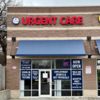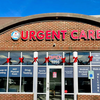Urgent care accepting
BlueCross BlueShield
Own a clinic? Add your location.
Help patients book appointments with you on Solv. It's free!
0 instant-book locations

MinuteClinic Inside CVS Pharmacy, W 5th Ave, Columbus
MinuteClinic Inside CVS Pharmacy

MinuteClinic Inside CVS Pharmacy, N High St, Columbus
MinuteClinic Inside CVS Pharmacy

MinuteClinic Inside CVS Pharmacy, E Main St, Columbus
MinuteClinic Inside CVS Pharmacy

MinuteClinic Inside CVS Pharmacy, S High St, Columbus
MinuteClinic Inside CVS Pharmacy

iMed Urgent Care
iMed Urgent Care

iMed Urgent Care, Grove City
iMed Urgent Care

MinuteClinic Inside CVS Pharmacy, Stringtown Rd, Grove City
MinuteClinic Inside CVS Pharmacy

MinuteClinic Inside CVS Pharmacy, W Henderson Rd, Upper Arlington
MinuteClinic Inside CVS Pharmacy

MinuteClinic Inside CVS Pharmacy, Roberts Rd, Hilliard
MinuteClinic Inside CVS Pharmacy

MinuteClinic Inside CVS Pharmacy, N Stygler Rd, Columbus
MinuteClinic Inside CVS Pharmacy

Scioto Urgent Care
Scioto Urgent Care

MinuteClinic Inside CVS Pharmacy, N High St, Worthington
MinuteClinic Inside CVS Pharmacy

MinuteClinic Inside CVS Pharmacy, London Groveport Rd, Grove City
MinuteClinic Inside CVS Pharmacy

MinuteClinic Inside CVS Pharmacy, S Cleveland Ave, Westerville
MinuteClinic Inside CVS Pharmacy

MinuteClinic Inside CVS Pharmacy, Sawmill Rd, Dublin
MinuteClinic Inside CVS Pharmacy

MinuteClinic Inside CVS Pharmacy, S Old State Rd, Lewis Center
MinuteClinic Inside CVS Pharmacy

MinuteClinic Inside CVS Pharmacy, E Main St, Reynoldsburg
MinuteClinic Inside CVS Pharmacy

MinuteClinic Inside CVS Pharmacy, Hill Rd, Pickerington
MinuteClinic Inside CVS Pharmacy

MinuteClinic Inside CVS Pharmacy, Seldom Seen Rd, Powell
MinuteClinic Inside CVS Pharmacy

MinuteClinic Inside CVS Pharmacy, E Broad St, Pataskala
MinuteClinic Inside CVS Pharmacy
Own a clinic? Add your location.
Help patients book appointments with you on Solv. It's free!
Recent Blue Cross Blue Shield Urgent Care Reviews (2)
BCBS Urgent Care
Since Blue Cross's founding in 1929 and the merger with Blue Shield in 1982, they have grown into an association consisting of thirty-six health insurance companies and affiliates in their federation, including Anthem, Highmark, CareFirst, and Regence. That makes them one of the most common health insurers in the United State, even internationally. The main reason is that patients can find healthcare services in over 170 countries. Over 106 million people throughout the country can make policy claims through Blue Cross Blue Shield (BCBS) with their memberships.
As a BCBS member, when you're sick or injured after office hours, urgent care centers are an excellent alternative to visiting an emergency room (ER), or waiting until you can see your primary care doctor. When you visit these locations, you'll find physicians and other qualified healthcare providers available to assist with a broad range of medical issues. These issues include everything from administering vaccines to treating the flu to performing x-rays.
According to statistics by Blue Cross Blue Shield, 54.3 out of every 1,000 members visited the emergency room between 2011 and 2015. Patients visiting a physician's office for minor conditions equaled 973 per 1,000 members. What many patients may not realize is their out-of-pocket costs for going to urgent care is less than visiting the emergency room. Urgent care centers are optimal when you need care that isn't life-threatening. As an HMO member, your urgent care visit has coverage so long as you visit an approved center. Be sure you have your Blue Cross Blue Shield ID card with you at the time of your visit.
If you're unsure if Blue Cross Blue Shield will cover the urgent care near you, call their 1-800 number or visit the company's website. Remember, consulting your BCBS affiliate is your best recourse for receiving specific details regarding services.
Related topics:
Blue Cross Blue Shield Urgent Care FAQs
Is urgent care covered by health insurance?
According to Section 2719A of the Affordable Care Act, plans must cover emergency services. However, many providers may not consider urgent care as an emergency services location. Under most circumstances, though, patients will find urgent care coverage if they pay a copay or deductible. Always call ahead if you're unsure of your coverages.
Does Blue Cross Blue Shield health insurance cover urgent care?
If you’re a member who visits an approved urgent care center, Blue Cross Blue Shield covers urgent care visits. The recommendation is to check to see if your primary care physician offers extended hours prior to going to an urgent care, however. Many network physicians have extended hours to help their patients during evenings and weekends. If you can't find help, then visiting an approved urgent care center is an excellent alternative.
Do retail clinics take Blue Cross Blue Shield health insurance?
According to Blue Cross Blue Shield, as much as 29.8 percent of emergency room visits could have had treatment in a retail clinic. These locations are optimal for those who need care for acute or straightforward conditions. Retail clinics have locations in "big box" stores, grocers, and pharmacies. There are over 2,000 retail clinics throughout the country and, despite having Blue Cross Blue Shield coverage, they're underutilized by those with employer-based insurance.
What is my urgent care copay with Blue Cross Blue Shield?
Depending on your location, copays could be approximately $60 per urgent care visit. That's significantly lower than potentially paying $200 for an emergency room visit. However, this copay is still higher than if you visit a retail clinic. Those copayments could be as low as $20 per visit. Keep in mind that urgent care and retail clinics aren’t available 24-hours. However, you can receive 24-hour care in the emergency room.
Can I use Medicare at urgent care?
According to MedicareFAQ, patients who go to urgent care for services will receive Medicare coverage. The recommendation is to visit an urgent care center, however, if you aren't experiencing a life-threatening issue. While the temptation remains to visit an emergency room for stitches or treat a urinary tract infection, those are issues urgent care can address inexpensively.
How much does urgent care cost without insurance?
Depending on your location, urgent care costs could range between $75 and 150 for each visit. So, if you have no insurance, those are moderate costs. However, you'll incur other fees for tests, medications, or charges for extended hour visits. While these costs are lower than when you visit the emergency room, uninsured patients should prepare for all additional fees. For example, when you look at the price for treating strep throat, urgent care costs $111 compared to $531 in the emergency room.
Urgent care vs ER vs walk-in clinic
Urgent care centers are mid-range for co-payments, and you'll find nurse practitioners, physicians, physician assistants, and registered nurses on staff. These locations are optimal for non-life-threatening injuries or illnesses. Many areas offer extended hours. Walk-in clinics, also known as retail clinics, are the most affordable option for patient care. Their locations are usually found outside of or next to "big box" stores, pharmacies, or other large retail locations. They're open weekends, as well as other extended-hour times. Emergency rooms are the priciest option for medical care. While they're open 24/7, they're not good to use as a first-choice unless you're experiencing a life-threatening issue. Emergency rooms have staff and equipment available to handle just about every medical emergency.

Updated on Dec 25, 2025
Related Searches
DOT Exam
Ear Wax Removal
Sports Physicals
A1C Test
Allergy Testing
Basic Metabolic Panel
Blood Test
CMP Test
Cholesterol Test
Diabetes Test
Diagnostic Test
Drug Test
Glucose Test
Hepatitis test
Mono Test
RSV Test
STD Testing
Strep Test
TB Test
Urinalysis
Vitamin D Test
Aetna Urgent Care
Blue Cross Blue Shield Urgent Care
Cigna Urgent Care
COVID-19
Flu
United Health Urgent Care
» All servicesFind Blue Cross Blue Shield urgent care
Nearby cities
Everyday Healthcare, Simplified
Expert advice to help you live your best life





![Care Continuum: Where to Go When Your Sick or Injured [INFOGRAPHIC]](https://ucl-cdn-prod.thirdparty.solvhealth.com/dir/media/W1siZiIsIjIwMTQvMDYvMDUvMTJfNDNfMzhfODI1X3doZXJlX3RvX2dvLmpwZyJdLFsicCIsInRodW1iIiwiMzAweCJdXQ?sha=a4b9959de5e927ba)



